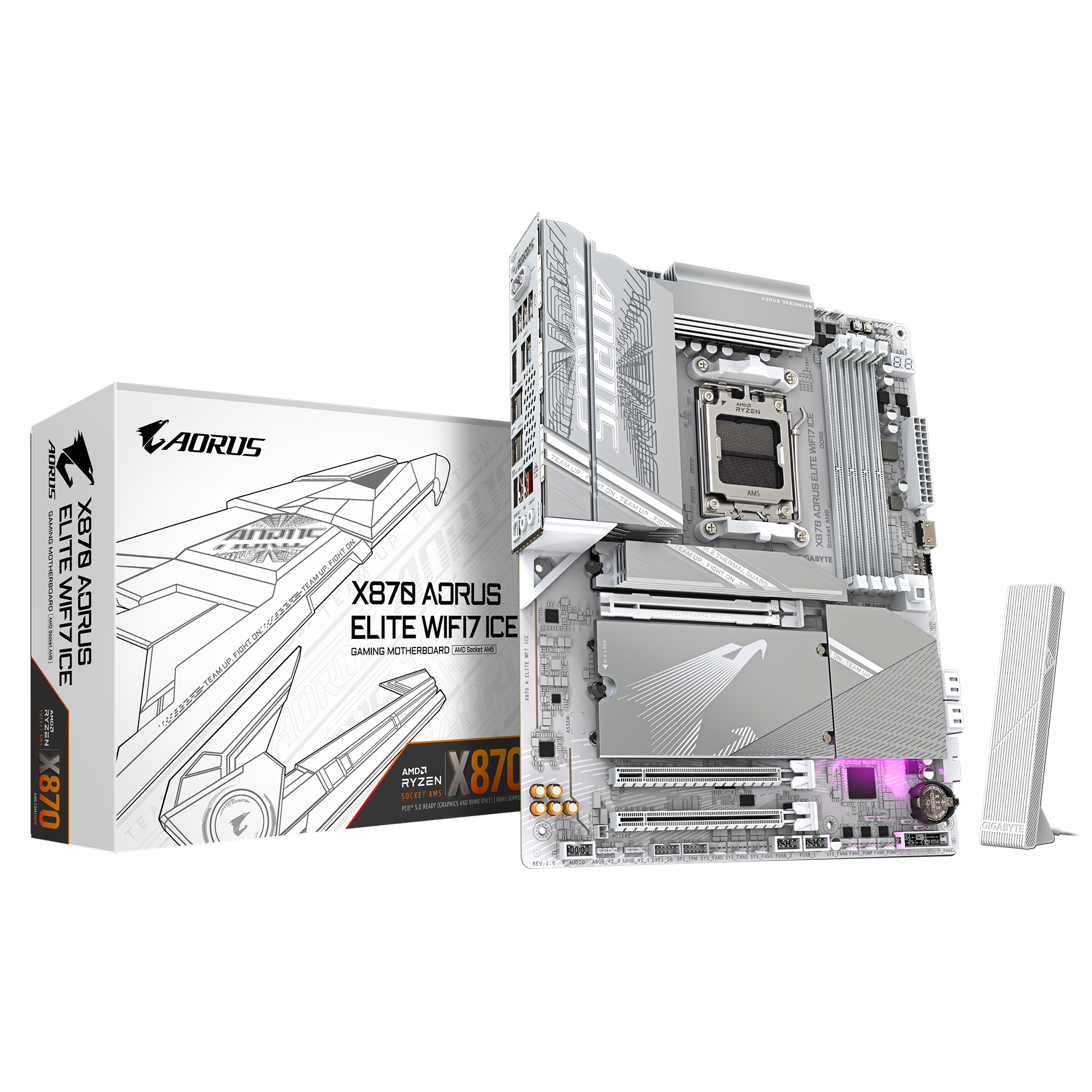Good morning Lads,
I've seemed to be stuck in a head-scratching and frustrating error. No matter what NVMe drive or NVME slot I use on my new AMD-based system, after windows installation I get
the classic Boot Drive not found error. Below are details of my bios, PC specs, and bio settings changed,
Hardwear:
Mobo - X870 AORUS ELITE WIFI7 ICE (brand new)
CPU - AMD ryzen 7 7800X3d
Ram - Corsair VENGEANCE 32GB (2x16GB) DDR5 DRAM 6200MT/S
GPU - AMD Sapphire 7800xt Pure
NVMe - Samsung 980pro Gen 4 1Tb
NVMe - Netac NV5000-t 2TB Gen 4
CPU Cooler - Artic Freeze III 240 RGB
X870 Bio is updated to the latest F3b
TWO DIFFERENT INSTALL METHODS USED (RUFUS AND WINDOWS MEDIA)
1.) Rufus has been used to install Windows 11 ISO to USB as both GPT UEFI and MBR CSM alongside removing windows requirements
2.) Windows media program has been used to install Windows to a PC
Bios edits include changing CSM to visible and changing boot options (OS drive) alongside side few other tricks.
No matter what option I chose and how I installed Windows 11, I still get 'No boot device found' after the bios start screen.
Things to note
- NVMe only shows up in the bios boot sequence if CSM support is enabled. Even if selecting the OS NVMe using F12 at start-up still leads to 'No boot device found'
- Both drives have been swapped between both M2A_CPU AND M2B_CPU M.2 slots
Any help is welcome, I've hit a brick wall!
Thanks in advance team!
I've seemed to be stuck in a head-scratching and frustrating error. No matter what NVMe drive or NVME slot I use on my new AMD-based system, after windows installation I get
the classic Boot Drive not found error. Below are details of my bios, PC specs, and bio settings changed,
Hardwear:
Mobo - X870 AORUS ELITE WIFI7 ICE (brand new)
CPU - AMD ryzen 7 7800X3d
Ram - Corsair VENGEANCE 32GB (2x16GB) DDR5 DRAM 6200MT/S
GPU - AMD Sapphire 7800xt Pure
NVMe - Samsung 980pro Gen 4 1Tb
NVMe - Netac NV5000-t 2TB Gen 4
CPU Cooler - Artic Freeze III 240 RGB
X870 Bio is updated to the latest F3b
TWO DIFFERENT INSTALL METHODS USED (RUFUS AND WINDOWS MEDIA)
1.) Rufus has been used to install Windows 11 ISO to USB as both GPT UEFI and MBR CSM alongside removing windows requirements
2.) Windows media program has been used to install Windows to a PC
Bios edits include changing CSM to visible and changing boot options (OS drive) alongside side few other tricks.
No matter what option I chose and how I installed Windows 11, I still get 'No boot device found' after the bios start screen.
Things to note
- NVMe only shows up in the bios boot sequence if CSM support is enabled. Even if selecting the OS NVMe using F12 at start-up still leads to 'No boot device found'
- Both drives have been swapped between both M2A_CPU AND M2B_CPU M.2 slots
Any help is welcome, I've hit a brick wall!
Thanks in advance team!


